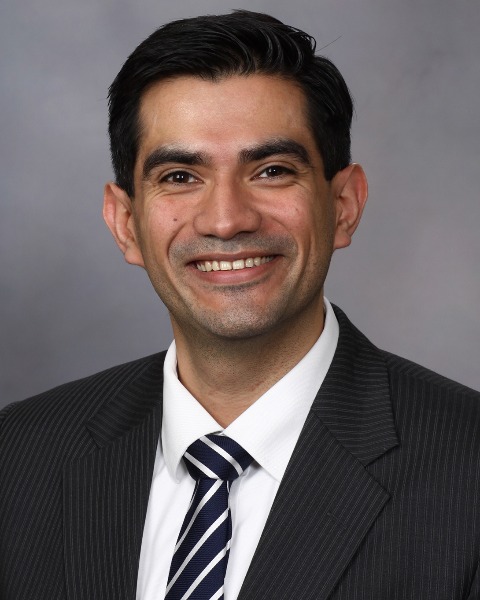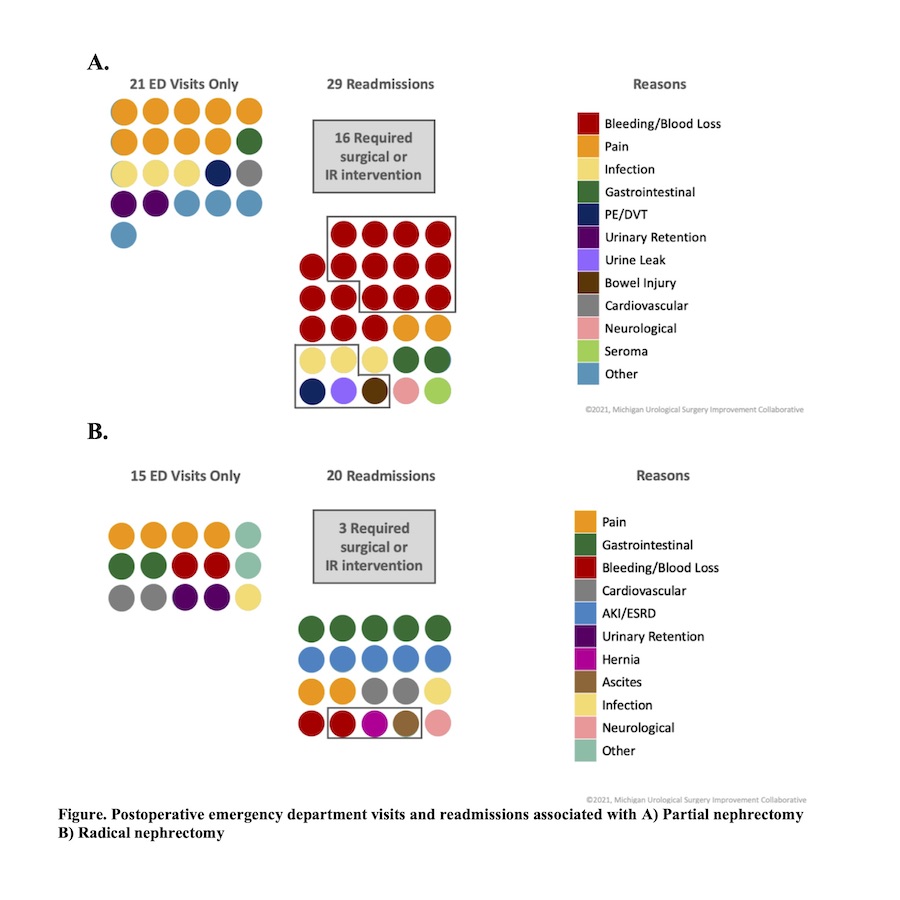Back
Poster, Podium & Video Sessions
Moderated Poster
MP39: Health Services Research: Value of Care: Cost and Outcomes Measures
MP39-12: Reducing post-operative emergency department visits and readmissions after nephrectomy: an initial evaluation of the MUSIC-KIDNEY registry
Sunday, May 15, 2022
8:45 AM – 10:00 AM
Location: Room 228
Mohit Butaney*, Detroit, MI, Anna Johnson, Asha Bulusu, David Gandham, Ji Qi, Ann Arbor, MI, Marcus Jamil, Amit Patel, Detroit, MI, Sabrina Noyes, John Anema, Grand Rapids, MI, Michael Levin, Mt Clemens, MI, Bradley Rosenberg, Royal Oak, MI, Brian Lane, Grand Rapids, MI, Craig Rogers, Detroit, MI, for the Michigan Urological Surgery Improvement Collaborative, Ann Arbor, MI

Mohit Butaney, MD, BS
Henry Ford Health System
Poster Presenter(s)
Introduction: Emergency department (ED) visits and readmissions are often used metrics of quality care provided to surgical patients and important contributors to healthcare costs and utilization. We evaluate post-operative ED visits and readmissions after partial (PN) and radical (RN) nephrectomy in the MUSIC-KIDNEY registry to identify potentially preventable events and develop prevention strategies.
Methods: Data abstractors recorded clinical, radiographic, pathologic, and follow-up data for patients with newly diagnosed clinical T1 renal masses (cT1RM) at 16 MUSIC practices with >90 physicians. All charts associated with 30-day ED visits and readmissions since the inception of MUSIC-KIDNEY (6/2017) were retrieved retrospectively and reviewed. We catalogued reasons and the clinical course associated with these events.
Results: The rates for ED visits after RN (2.9%) and PN (2.6%) were similar, with slightly higher readmission rates with RN (4.2%) compared with PN (2.9%). There was wide variation in these rates across MUSIC practices (range: 0-9%). BMI <25, length of stay >3 days, and warm ischemia time >30 minutes were associated with readmission in PN patients. Younger age was a predictor of ED visit after RN. About 60% of ED visits led to readmission (29/50 and 20/35 ED visits for PN and RN, respectively). The figure indicates the distribution of reasons for readmission and the number that required surgical or interventional radiology intervention. 40% of ED visits were due to pain. Surgical bleeding was the most common reason for readmission following PN and gastrointestinal issues were the most common reason for readmission after RN. Of the cases reviewed, we found that 60% of ED visits were preventable, and 70% of complications were potentially avoidable.
Conclusions: We have identified areas to prioritize quality improvement within MUSIC-KIDNEY, namely limiting avoidable ED visits after surgery (by education and communication about pain and GI issues) and improving intraoperative and postoperative management of surgical bleeding.
Source of Funding: Blue Cross Blue Shield of Michigan

Methods: Data abstractors recorded clinical, radiographic, pathologic, and follow-up data for patients with newly diagnosed clinical T1 renal masses (cT1RM) at 16 MUSIC practices with >90 physicians. All charts associated with 30-day ED visits and readmissions since the inception of MUSIC-KIDNEY (6/2017) were retrieved retrospectively and reviewed. We catalogued reasons and the clinical course associated with these events.
Results: The rates for ED visits after RN (2.9%) and PN (2.6%) were similar, with slightly higher readmission rates with RN (4.2%) compared with PN (2.9%). There was wide variation in these rates across MUSIC practices (range: 0-9%). BMI <25, length of stay >3 days, and warm ischemia time >30 minutes were associated with readmission in PN patients. Younger age was a predictor of ED visit after RN. About 60% of ED visits led to readmission (29/50 and 20/35 ED visits for PN and RN, respectively). The figure indicates the distribution of reasons for readmission and the number that required surgical or interventional radiology intervention. 40% of ED visits were due to pain. Surgical bleeding was the most common reason for readmission following PN and gastrointestinal issues were the most common reason for readmission after RN. Of the cases reviewed, we found that 60% of ED visits were preventable, and 70% of complications were potentially avoidable.
Conclusions: We have identified areas to prioritize quality improvement within MUSIC-KIDNEY, namely limiting avoidable ED visits after surgery (by education and communication about pain and GI issues) and improving intraoperative and postoperative management of surgical bleeding.
Source of Funding: Blue Cross Blue Shield of Michigan


.jpg)
.jpg)